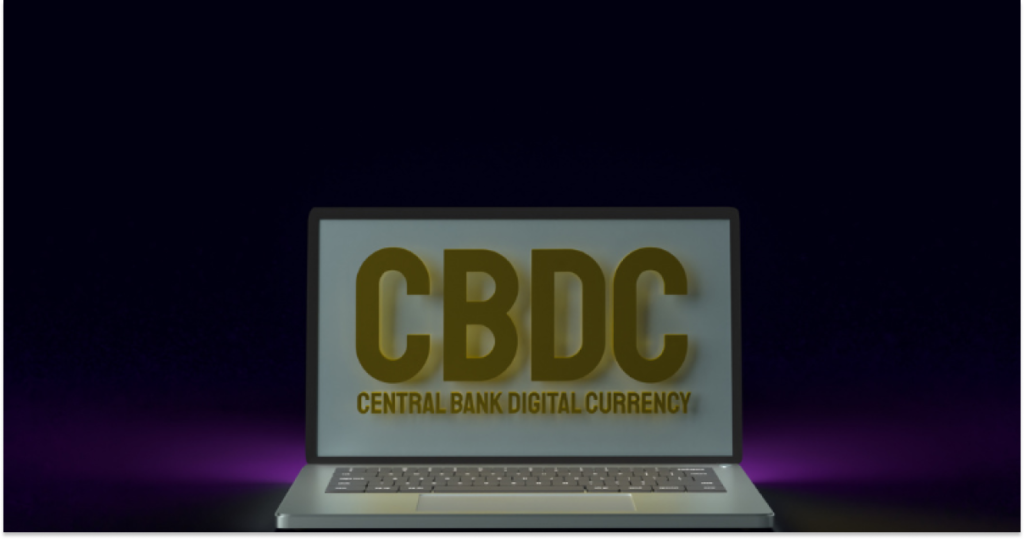A Comparative Study between Central Bank Digital Currency (CBDC) and Stable Coins
March 23, 2023

Summary
CBDC
A Central Bank Digital Currency (CBDC) is a digital version of a fiat currency issued by a central bank, but it is not limited to providing the same functions as traditional physical fiat currency. CBDCs have the potential to offer additional features such as programmability, traceability, and enhanced security. CBDCs are typically issued and backed by central banks and are expected to be legal tender.
The creation of a CBDC in the US would require action by Congress, as the authority to issue currency is granted to Congress by the US Constitution. The Federal Reserve, as the central bank of the United States, can issue physical currency and has the power to issue digital currencies, but any decision to create a CBDC would require authorization from Congress. That would take several years of process and implementation.
STABLECOIN
A Stablecoin is a type of cryptocurrency that is pegged to the value of fiat currencies or other assets such as gold. The primary purpose of stablecoins is to provide price stability and minimize volatility in the cryptocurrency market. Unlike CBDCs, stablecoins are not issued by central banks but are created by private companies or individuals.
Stablecoins are an issue of trust, as their value is pegged to a particular asset or basket of assets, and users must trust that the issuer of the stablecoin has sufficient reserves of the underlying asset(s) to maintain the stablecoin’s value.
Introduction
CBDCs and stablecoins are centralized and backed by physical assets or a currency, Bitcoin and altcoins are decentralized, and their value is determined by market demand and supply.
This analysis focuses on the key differences between CBDC’s and Stable Coins and what their roles may be in the future of financial services.
Background and Context
2009 to 2023 (15 years of history)
2009 – Bitcoin was created in 2009 by an unknown individual or group using the pseudonym Satoshi Nakamoto. It was designed to be a decentralized, peer-to-peer digital currency that operates independently of governments and financial institutions. The idea was to create a system that could enable secure and fast online transactions without the need for intermediaries like banks or payment processors. Bitcoin’s underlying technology, called blockchain, is a distributed ledger that records every transaction made on the network in a transparent and immutable way. This makes it virtually impossible to alter or manipulate the records, which enhances the security and trustworthiness of the system.
2011 – Altcoins, or alternative cryptocurrencies, are digital assets that are built on the foundations of Bitcoin but offer alternative features and functionalities. The first altcoin, Namecoin, was created in 2011 as a fork of Bitcoin with added functionality for domain name registration and a decentralized naming system. Another early altcoin, Litecoin, was launched in 2011 with faster transaction times and lower fees than Bitcoin. Ethereum, created in 2015, introduced the concept of smart contracts and enabled developers to build decentralized applications (dApps) on its blockchain network.
2014 – Stablecoins began with Tether which was launched in 2014 with the aim of maintaining a stable value pegged to the US dollar. Tether operates by holding US dollar reserves that are equivalent to the number of Tether coins in circulation, ensuring that the price of Tether remains stable at around $1. Since the launch of Tether, other stablecoins have emerged, each with their own mechanism for maintaining price stability. Some stablecoins are backed by fiat currency or commodities, while others use algorithms or smart contracts to maintain price stability. For example, USD Coin (USDC) is a stablecoin backed by US dollars held in reserve by regulated financial institutions.
2014 – Central Bank Digital Currencies (CBDCs) are digital versions of a country’s fiat currency that are issued and backed by a central bank. The concept of CBDCs emerged in the wake of the growing popularity of cryptocurrencies and the potential disruption they posed to traditional banking systems. The first country to seriously consider the launch of a CBDC was China, which began exploring the idea in 2014. The People’s Bank of China (PBOC) launched pilot programs for its CBDC, the digital yuan, in 2020, with plans to gradually roll it out to the wider public. The digital yuan operates on a centralized system, with the PBOC controlling the issuance, distribution, and monitoring of the currency.
2014 to 2023 – Other countries have since followed suit, with many central banks around the world currently exploring the potential of CBDCs. The European Central Bank (ECB) launched a public consultation on a digital euro in 2020, while the Bank of Japan began testing its CBDC in 2021. The US Federal Reserve has also been exploring the potential of a digital dollar. South Africa launched its CBDC in March 2023. The motivations for launching a CBDC vary, but typically include improving financial inclusion, increasing efficiency and security of payments, and maintaining sovereignty over the country’s monetary system. However, CBDCs also raise questions about privacy, cybersecurity, and the potential impact on traditional banking systems. Public feedback and participation is required.
Functionality and Purpose
Stablecoins, such as USDC, and Central Bank Digital Currencies (CBDCs) both aim to provide a stable digital currency option that can be used for payments and transactions.
USDC is pegged to the US dollar at a 1:1 ratio, providing fast and cheap transactions that can be used globally and borderless, while adhering to US regulatory compliance such as KYC and AML.
In March 2023, a “black swan event” occurred that effectively de-pegged USDC from the USD for 36 hours. The reason was that 8% of USDC’s cash reserves, securing the peg, were held with Silicon Valley Bank, which collapsed and was subsequently bailed out by the US government.
This event can be seen as a fundamental failure of the Stablecoin principle, but it is also a significant learning experience for all involved. The 1:1 peg was restored after 36 hours, and the “pegging” funds were moved to other institutional banks that have less volatility. Coinbase also offered to support USDC during this volatile time by offering $3.6 Billion in liquidity, indicating shared market confidence in USDC.
On the other hand, CBDCs aim to provide a secure, efficient, and stable means of payment and financial transactions while also maintaining the sovereignty and control of the country’s monetary system by providing a digitized version of their central bank currency. From an economic viewpoint, Stablecoins achieve the same goal as CBDCs with one being issued by a non-government entity such as Circle, while the other is issued by a government. Both provide a digitized version of US fiat currency that can be used by businesses for various purposes, such as international payroll and cross-border payments.
Conclusion
Fiat currency has a layer of anonymity that a CBDC will not have, and this may be where Stablecoins have the upper hand. If stablecoins are well-regulated, and in compliance with regulatory measures such as KYC, AML and other financial regulations, they can provide a link between the public and the government, while maintaining a layer of anonymity (that can be overcome through a court order if needed). This would align more closely with a digitized fiat currency as opposed to a new type of currency that the CBDC would be.
CBDC’s in some countries will take many years to become a reality, but Stable Coins are ready and available now and are globally interoperable.
Share Blog:
Empowering Peoples' Pockets
Empowch™, Empowch.com™ are trademarks of Bankey, LLC.
Copyright © 2022 Bankey, LLC
All Rights Reserved.
All other trademarks are the property of their respective.








